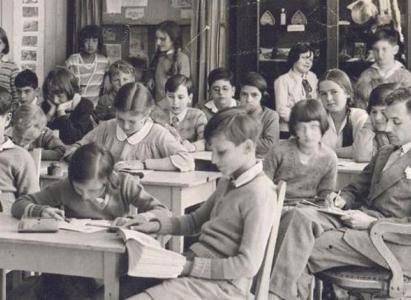Although Jean-Jacques Rousseau had published his at once brilliant and bizarre treatise on the subject some 200 years earlier (Emile is a book about the psychology of learning and the techniques of teaching), it was very much ahead of its time and would only really influence practitioners in a wide scale, tangible fashion through what was known in the early 1920s as “l’éducation nouvelle”.
Under the broad concept of Rousseau's pedagogy, l’éducation nouvelle was a melting pot of the ideas of John Dewey, Maria Montessori and Jean Piaget, as well as earlier thinkers such as, Friedrich Fröbel and Johann Heinrich Pestalozzi.
What all of these educational philosophers have in common is a belief that, on the one hand, natural student inquiry and the intrinsic curiosity young people have should feature prominently in educational practices and, on the other hand, that the attention of the teacher should be less on the curriculum to be covered and much more on the emotional, psychological and social dynamics at work within the student. By paying attention to these two elements, a learner-centred pedagogy is born.
In the 1920s, most classrooms followed a rigid, didactic model of learning with a knowledge-heavy approach, lecturing and repetition and little if any of the more sophisticated techniques good teachers understand and use: differentiation, scaffolding, group work, testing for understanding rather than for production and so on. The fiction of Charles Dickens gives the reader several comedic parodies of this unimaginative teaching style, notably in the figure of Gradgrind, the facts-obsessed teacher in his novel Hard Times.
However, in the world’s first international school, the first teachers were resolutely ensconced in learner-centred pedagogic theories. One in particular was Florence Fake, an extremely well-versed and expert teacher with a doctorate in education from the University of Chicago who travelled to Geneva to teach according to the principles of John Dewey, whose democratic classroom put an emphasis on critical thinking, student voice and, above all, learning by doing (often called active learning). The fact that the school was willing to bring a teacher from the other side of the world to teach is an indication of its commitment to the sort of pedagogy it believed in. Another teacher of the early days, who made a huge impact on her students, was the Russian German pedagogue Elsa Hartoch, who had studied with Maria Montessori.
Hence, the very first day of class was not spent sitting in rows listening to the teacher lecture, or learning Latin declensions, on the contrary, students gathered around a simple project: to build a hutch for the school’s pet rabbit. In this project were all the seeds of a constructivist approach to learning: the teacher and the students working together, the learning articulated around a real-life project, less an exercise in theory and more one in practice.
Other famous teachers from the early days of Ecolint were well known for their active and creative teaching methods: Paul Dupuy, who would have students in groups draw maps of parts of the world unknown to them for example, or Charles Baudouin, the French psychoanalyst, who would use elements of his therapeutic practice to enhance the learning of literature in creative and highly effective ways.
Active, inquiry-based and constructivist learning offer much more to students than merely technical pedagogy. In the 1970s, investigating pedagogical practices in desegregated schools in the United States in the wake of Brown vs Board (1954), the psychologist Elliot Aronson designed the jigsaw classroom (where students learn from each other in structured rotating groups) as a way of mitigating the growth of prejudice. This is because Aronson noticed how the individualistic zero-sum game of high stakes assessment, the competitive spirit created by classrooms with the teacher at the front testing knowledge with the students raising their hands individually to be noticed and asked to speak, was doing little if anything to break down some of the social barriers that existed between students. On the contrary, when students are brought together to listen to each other carefully and actively, when they work together on a common project, when they learn from each other and not in spite of each other, the respect they have for one another grows and a general atmosphere of working together is enhanced. This is what Aronson noticed and researched.
So, constructivism is not just about constructing learning in a narrow sense, it is also about creating a more collaborative and peaceful world. If world leaders could sit together and work together in a project-based manner, the benefits for world peace would be considerable.
International Schools need to continue to respect this original credo of the International School of Geneva and design learning experiences that develop the dispositions needed for individual, collective and public good, as the pioneers of the school knew so many years ago.
Conrad Hughes
Director General
